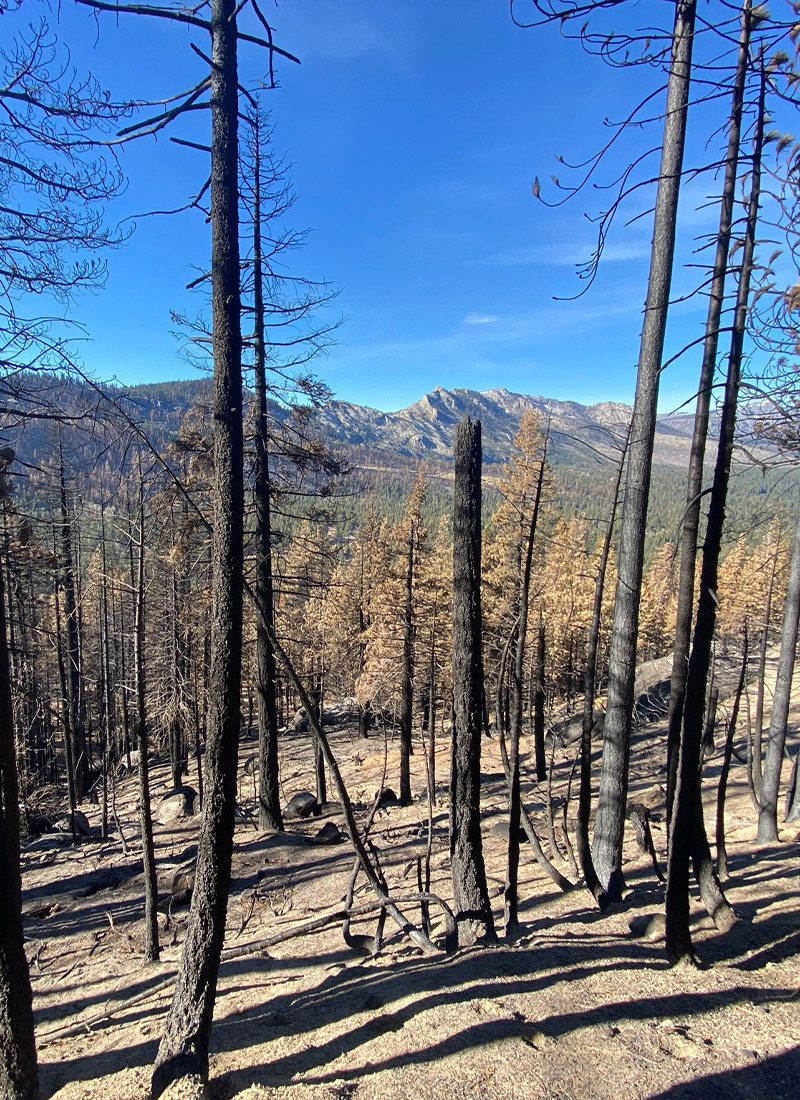KYBURZ, Calif. — On a steep mountainside where walls of flames torched the forest on their way toward Lake Tahoe in 2021, blackened trees stand in silhouette against a gray sky.
“If you can find a live tree, point to it,” Hugh Safford, an environmental science and policy researcher at the University of California, Davis, said touring damage from the Caldor Fire, one of the past decade’s many massive blazes.
Dead pines, firs, and cedars stretch as far as the eye can see. Fire burned so hot that soil was still barren in places more than a year later. Granite boulders were charred and flaked from the inferno. Long, narrow indentations marked the graves of fallen logs that vanished in smoke.
Damage in this area of Eldorado National Forest could be permanent — part of a troubling pattern that threatens a defining characteristic of the Sierra Nevada range John Muir once called a “waving sea of evergreens.”
Forest like this is disappearing as increasingly intense fires alter landscapes around the planet, threatening wildlife, jeopardizing efforts to capture climate-warming carbon and harming water supplies, according to scientific studies…


